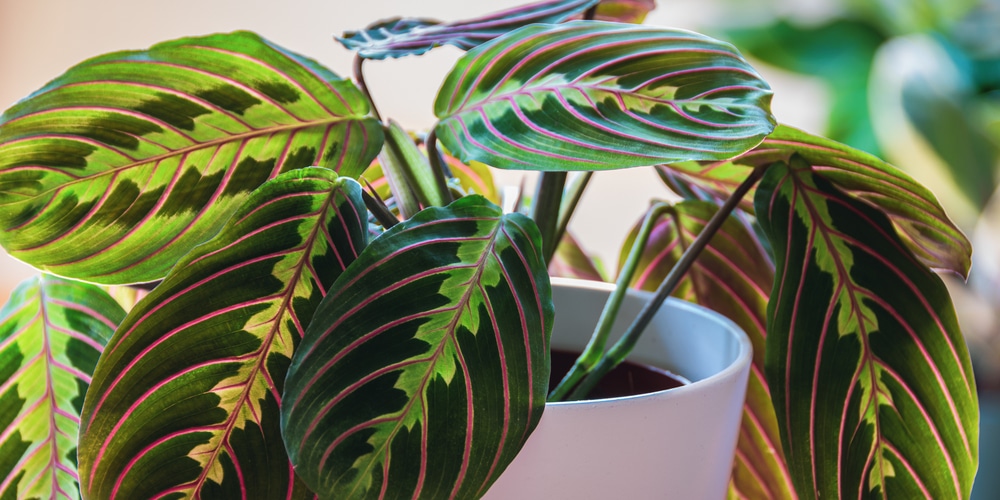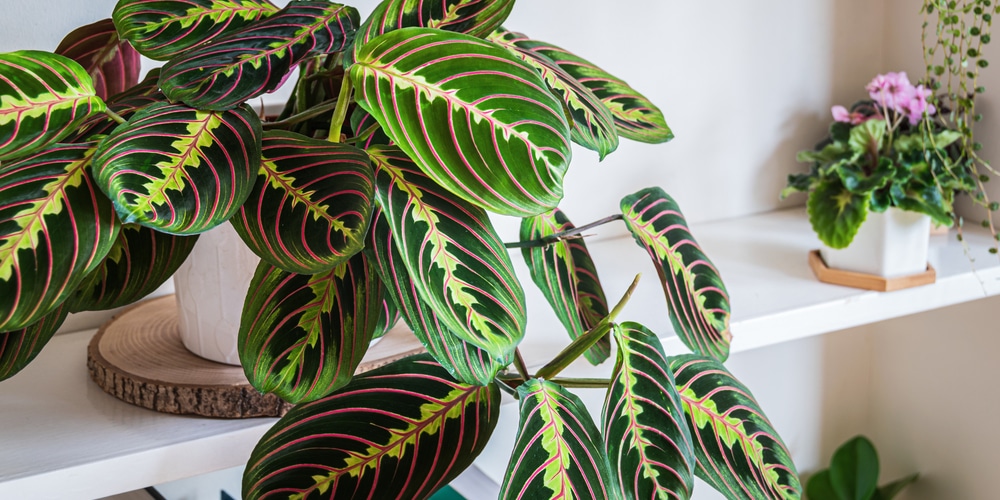A Prayer Plant’s beautiful and patterned foliage is considered by many to be its greatest asset. That said, it’s easy to notice when your plant isn’t happy when the leaves are curled or droopy.
You might wonder, ‘why are my prayer plant leaves curling?’ Here are five reasons and the steps you can take to fix the problem.
Your Prayer Plant is Getting Direct Sun

There are currently more than thirty different varieties of prayer plants around, and they all have one thing in common- they do not like being exposed to direct sunlight. When this happens, it’s only a matter of time before your prayer plants start curling their leaves as a sort of defense mechanism.
Maranta leuconeura are typically understory plants in their native environment, which means they live under the canopy of larger trees. Prayer plants are fine with bright and indirect light, so it’s best to recreate this setting.
Your plant might be situated on a windowsill that gets morning or afternoon light. To remedy prayer plant leaf curling because of too much sun, you should move it further out of the sun’s rays or relocate to a spot that gets bright light.
The Environment is Too Hot or Too Cold

People tend to exaggerate the toughness of a prayer plant. While it’s true that your houseplant can live in low-light conditions for a week or two without suffering from ill effects, your prayer plant won’t like it if you expose them to temperature extremes.
Most plants won’t like being too near a heat source, such as a boiler, furnace, or fireplace, or an area in the room that gets cold drafts (such as an open window or screen door). A Prayer Plant with curled leaves is a sign that it’s super stressed, and that you should do something to bring it back to normal.
Take a look around the room where your prayer plant is in. Does it get too hot in certain areas of the day, or does it get too cold in winter? If that’s a yes then you’ll definitely need to move your plant to another location.
The Soil is Too Dry
Unlike other house plants such as the snake plant or jade plant, Maranta leuconeura won’t make it too long if you don’t give them enough water. It’s native to tropical regions where the air is constantly humid and the soil is constantly moist but not overly wet.
Correcting the problem of prayer plant leaves curling is sometimes a matter of just giving it a drink from your watering can. However, you’ll want to check the soil surface first with a finger to see if this is the case. Afterward, make sure to irrigate regularly to avoid facing curled leaves again.
Your Plant Doesn’t Like the Water Quality
Tap water can be a silent killer for your plants. One day your prayer plant could be healthy and put on a fine display. Then, the leaves suddenly curl and you’re feeling helpless because there’s nothing you can do to help.
Excessive salt and chlorine in water can kill a plant and you’d be none the wiser. The signs that the water you’re giving is poor include yellowed or curling leaves, brown tips, and stunted growth. If these things happen quickly then chances are that your water is not clean enough for your Prayer Plant.
To remedy this, immediately switch to distilled water or filtered water and flush out the salt in your prayer plant’s soil. You may need to do this twice or even three times, but hopefully, the damage won’t be too great and your plant will survive.
There’s a Pest Infestation
Pests such as aphids, mealybugs, and scale can weaken your prayer plant and cause leaf curling.
Take a close look at the prayer plant’s curled leaves and underneath it- do you see insects or white spots hanging around? Chances are that pests are causing your prayer plant a great deal of distress.
Fortunately, this problem is easy to fix. A mixture of liquid soap and water or neem oil should do the trick. Spray the solution all over the plant, and apply a few more times as needed in about three to five days.
